This article was originally posted on 180 Nutrition here.
http://youtu.be/D7l1F4DW2s0
For one week only 180 Nutrition are doing a LIMITED EDITION CAP with Chad Mackays’ signature on it. All profits will go to help Chad prepare for the 2013 CrossFit Games. Click here to get one.
For those of you that CrossFit, Australian legend Chad Mackay needs no introduction. For those that don’t, I would best describe him as one of the finest athletes in the country!
It was an awesome pleasure to be able to have an in-depth interview with him. So no matter what sport or discipline you are into, there’s so much to learn from the big man.
– You can follow Chad Mackay on Facebook here.
– If you are interested in being coached at Chad’s gyms click here.
Download or subscribe to us on iTunes here.
In this weeks episode:
Who is Chad Mackay & what is CrossFit
What a typical day looks like for Chad
What he eats, including pre/post training
The hurdles people face when starting CrossFit for the first time
Why mobility is important (learn more about mobility here)
The fine line between training and over training
and much more…
Transcript
Stuart Cooke: I hope Guy hasn’t been boring you, Chad.
Chad Mackay: No. No. No, buddy. He just told me that you must have been perming your hair or something like that.
Stuart Cooke: Mate, you know what I’ve been doing? I’ve been working out on a trigger-point grid.
Chad Mackay: All right!
Stuart Cooke: Are you proud of me? I’m rolling out. That’s what I’m doing. I’m getting back to 100 percent.
Guy Lawrence: He’s getting there. I’m still in shock that he’s got a blue t-shirt on like last time. We interviewed Christine the other week and we ended up; but I got in theme today, see? I’ve got my CrossFit t-shirt on.
Stuart Cooke: All right. OK. That’s really good.
Guy Lawrence: Fair enough. All right, so, we might as well start. Anyone listening to this, I’m Guy Lawrence. We’ve got Stuart Cooke and a very special guest, Mr. Chad Mckay.
Chad, welcome. Thanks for dropping in and joining us, mate.
Chad Mackay: Cheers, guys. Very excited.
Guy Lawrence: Yeah, so, what we thought we’d do was, obviously, you don’t need any introduction within CrossFit, you know, but we have a lot of listeners as well; a lot of non-CrossFitters as well. And we were kind of just chatting yesterday about how we can, because, as far as I’m concerned, you’re one of the best athletes in the country.
You know, you’re a coach as well and there’s so much more to get from you than just CrossFit. So, we thought we’d divide it up into two parts. So, we’ll chat a bit more broader first and then we’ll delve into WODs and Fran times and all that kind of stuff afterwards, because people are wondering what the hell we’re on about.
Chad Mackay: Sure. Sounds good.
Guy Lawrence: Yeah, fair enough. So, mate, just to start, then, can you just tell us a little bit about yourself for the people that have no idea what CrossFit is or what you do?
Chad Mackay: Yeah, sure, sure. So, CrossFit’s basically a combination of kind of gymnastics movements, Olympic weightlifting, and strength and conditioning and also kind of hybrid movements using different kind of apparatus: kettle bells; stuff like that. And we put them in workouts and we try and use those different elements to try and pretty much become competent across a whole broad range of exercises and movements.
And yet, it first started off over in the States back in 1996 and it was basically started by a guy called Greg Glassman, and he was a gymnast and then he got a couple of serious injuries and he wanted to start his own kind of athletic performance gym and that’s how, kind of, CrossFit came about. He started training clients and athletes in his own garage back in LA and it’s kind of grown from there.
Guy Lawrence: Yeah, right. I didn’t realize it went that far back: ’96.
Chad Mackay: It’s been around for a few years, and it’s slowly evolved over time and, obviously, sponsors and the like have been involved over the last couple of years and the sport’s just taken off.
Guy Lawrence: Yeah, OK. Because, like, we’ve been involved probably, I think Homebush was probably our first real experience of it, which was, I think, three regionals ago.
And we’ve seen that growth unbelievable, you know, just within that time. It’s quite a; it’s a unique thing because when we turned up, like, I knew CrossFitters before that but I’d never been to a regional competition, and it’s really hard to describe for your first experience if you ever see it, you know. We kind of talked about it like being WODstock.
Chad Mackay: Yes!
Guy Lawrence: Or Woodstock, but now it’s WODstock. So, we had all these sort of interesting characters looking around that are absolute fine specimens eating whole chickens and the only thing that was missing was the music festival at the same time, you know?
Chad Mackay: Yeah, absolutely.
Guy Lawrence: So, you coach as well, don’t you, outside?
Chad Mackay: I’ve got a couple of gyms over on north shore of Sydney. One’s in Waverton and the other is in Artarmon. And there’s myself and a couple of other business partners.
And we take care of most of the coaching classes there, so, you know, the class is broken up pretty much into, like a general warm-up for the class and every round there will be either one or two coaches on in the class and we’ll have somewhere between five and 15 to 20 people. We’ll get through the general warm-up, some mobility, normally some kind of skill, and then we’ll do a strength component and then a conditioning piece as well. So, that’s what a lot of people mainly know CrossFit and kind of the generalization is we only really do a hard workout and it’s like a circuit-style training, but there’s a lot more involved than just the WOD, so to speak, or the Workout Of the Day.
So, the athletes get a little bit more exposure to a whole bunch of different movements rather than just a conditioning piece in the workout.
Guy Lawrence: Yeah, fair enough. I mean, the one thing I just want to say as well is that, because you’re a competitive athlete, you know. You go into the World Games. That achievement in itself is gynormous. And so, what I’m interested in is, what does your typical day look like, because, A, you’re a professional athlete, even though it’s probably not recognized as a professional sport. You know, you’re doing all this coaching, it’s a full-time gig, like, what’s a typical day for you?
Chad Mackay: A typical day would be, let’s take yesterday, for example. I started work at 6 a.m., so the alarm was set for 18 minutes past 5. And then I’ve got 12 minutes to quickly have a shake, get out the door, get dressed, get to work by 5:45, coach two classes in the morning, and then I’ve got admin work to do until about 11 o’clock.
And then I train from 11 until about 1 o’clock, so a two-hour session. And that session goes pretty much back-to-back, going through a similar structure to our classes, kind of like general warm-ups and skill, some Olympic lifting, and some strength.
And then I had clients from 1:30 until 4:30. And then I coached three classes and then I had another client at 7:30 and then home by about 9 o’clock.
Guy Lawrence: Wow. I’m tired listening to you.
Stuart Cooke: Straight to bed.
I’m interested about your clients, Chad. Tell about their diversity, because I have seen, just within a CrossFit-type gym, youngsters to the elderly as well, which wouldn’t be your typical, kind of, gym junkie.
Chad Mackay: Absolutely. My clients that I train one-on-one range from, I’ve got a Paralympic swimmer that I train; his name’s Matt Levy. So, I train him a couple of times a week. I train Lynne Knapman. She is a master’s competitor who has competed in the last three CrossFit Games in the category of 50 to 55. So, she’s doing really well. And then I’ve got just some athletes that just want to try and improve their general strength; they may be fairly new to CrossFit.
So, there’s just a broad spectrum of, kind of, ages and abilities there. But regardless of who I’m training, everyone just really has the same kind of consensus of: Let’s try and improve and see what our body is capable of doing and you see those small little improvements and I think that’s why people kind of really find that CrossFit and the kind of strength and conditioning that we do at the gym is really beneficial to people’s bodies.
So, it’s not only the people who are training, whether it’s an elite athlete going to the Olympics or the CrossFit Games, but we have the normal Joe Blow off the street who just wants to improve their flexibility, so to speak. They might sit at a desk for eight hours a day and they’ve got really tight upper body; thoracic. So, yeah, just some general, super-general flexibility issues that we can kind of address during classes or whether they come to see one of the coaches for a one-on-one session.
Guy Lawrence: Yeah, fair enough. What are the most common issues you’d see with clients when they first start training? Do they come there for, like, weight loss or muscle gain and then they’re opened up to CrossFit and their mindset will completely change around it, or. . .
Chad Mackay: Oh, there’s a whole; it’s probably more along the lines of: People hear about CrossFit and it’s normally from a friend or they’ve heard about the community and what’s involved in the community at the gym. So, it’s a lot of word-of-mouth. But the general issues that we have coming to the gym is people sit down at a desk all day and they’re in a flexed position where the hip’s closed off, the shoulders are closed off, and they’ve got a really forward head tilt. So, they’re the main issues.
So, we may get a fairly strong person that comes in that can’t overhead squat a broomstick just because their body is holding them back from being able to hold a bar overhead and do a simple movement like an overhead squat.
Guy Lawrence: We got a question here about mobility, so we’ll touch on that first while we are on it.
Chad MacKay: Sure.
Guy Lawrence: The first time I ever, because remember I mentioned I used to work with Lynne, who you know as well, and she was fabulous CrossFitter. And I’ll never forget the day about, it must have been about four years ago where she was overhead squatting in the gym I was working at. And I went down, I started chatting, and it was 60 kilos, I think.
And it was the first time I was exposed to an overhead squat and she’s like, “Yeah, go on. Let’s see you do it.” And I’m there, you know, all ego, throw the bar above my head, and I move about two inches and I couldn’t do it. And that was my first exposure to mobility, and probably CrossFit as well.
And I think mobility is something that’s overlooked by everyone, and only CrossFit seems to embrace it. Like, I remember working in a gym. You know, you traditionally warm up, you might do a bit of a stretch, and then you get into your exercise. But you walk into a CrossFit gym, you’ve got people who almost look like they’re grinding the floor because they’re rolling out in something.
Stuart Cooke: It is a bizarre sight; I’ll give you that.
Guy Lawrence: It’s amazing. And so, could you just tell us a little bit more about, I guess, mobility, the importance of it, and why so many people suffer from it? You know, I think it’s so untouched outside the. . .
Chad Mckay: Absolutely. The main issue is when people sit down, it obviously closes off the front of the hip and over time you will find yourself sitting at a computer, and, like I said before, that forward head-tilt, that decrease in kind of range of movement at the shoulder joint, everything’s pretty much facing forward and there is no real posterior chain, so. . .
Posterior chain is everything pretty much at the back of your body, so glutes, hamstrings, and kind of the rectus. And when you’re setting down on a chair, it just promotes you to sit forward and use everything in the frontal plane and, over time, eight hours sitting in that position, and then people normally go to the gym and they’ll normally train what’s at the front, so: chest, biceps.
So, how CrossFit differs from that, it pretty much tries to tell you to pretty much work everything in that posterior chain. Dead lifting, squatting, and doing things like pull-ups and overhead squats is going to develop that posterior chain, and over time, hopefully, get people into a more of an extended position; a more upright body posture and shape.
Stuart Cooke: Do you think there would be anything that we could do at home, outside of a gym environment, that would just help loosen us up? You know: stand up straight, shoulders back, anything along those kind of lines?
Chad Mackay: Well, there’s some simple things where you can lay flat on the floor and there’s just a basic movement called a glute bridge where it opens the hip up and it gets the butt and the hamstrings nice and strong. And that’s just a simple hip raise up off the floor.
Also, another very simple exercise is just stretching out in front of the sides of the neck and also possibly laying on the floor again and just pulling the chin down to the floor to kind of lengthen out the back of the neck. Just some really simple things to kind of loosen up and not let the body get in this position. So, yeah. The glute bridge, the side of the neck stretch, and then the kind of back-of-the-neck stretch on the floor.
Guy Lawrence: Do you mobilize every day, Chad?
Chad Mackay: Pretty much every day.
Stuart Cooke: Every minute, I think, Guy. Not every day.
Guy Lawrence: I still keep coming back to the fact that you can snatch 130 kilos. Mobility must have, you know, played a big part in being able to do that.
Chad Mackay: Man, absolutely. If I go to the movies with my girlfriend, I’ll take a small little golf ball and put that golf ball on the ground and I’ll just get some release on the bottom of my feet. So, I’ll spend 45 minutes on each foot and it does make a big difference. It’s like going for a massage. I had a massage this morning and my body feels like it’s already improved a little bit and I can feel the difference already. So, if I can get 45 minutes on each foot while I’m going to the movies, buddy, that’s perfect.
Stuart Cooke: That’s a top tip.
I’ve got a question about your diet. You know, you do a huge amount throughout your day. What does your typical daily look like? What are you eating and how much do you eat?
Chad Mackay: Well, in the off season I’ll tend to eat a little bit more. During the season, I try and weigh and measure most of my meals. Otherwise, I just feel like I can overeat quite easily. So, I just need to be quite strict on what I do eat and at what times.
A general day would be five meals, and those meals would be spaced about four hours apart. Breakfast will be about a quarter past 5 in the morning where I’ll have a shake, a banana, and a handful of nuts. About an hour before training in the morning I’ll have just a really small snack, kind of pre-workout, and then post-workout I’ll try and have a full meal, whether that will be chicken or lamb. So, some type of flesh. And then a big salad, sweet potato, and that will be kind of drenched in olive oil and avocado. And I’ll have a piece of fruit after I work out.
My meals are basically the same for the rest of the day, so brekkie and post-workout meal and then that post-workout meal is the same for the next three meals throughout the day.
Guy Lawrence: Where do you get your carbs from? So, mainly sweet potato and fruit and veggies?
Chad Mackay: Sweet potato and fruit and veggies.
Guy Lawrence: Do you eat any grains?
Chad Mackay: No grains at all.
Guy Lawrence: Good man.
Chad Mackay: No grains at all.
Guy Lawrence: Yeah, yeah, yeah. You know, because I only raise it as well because there’s a common myth that you need, traditionally, if you’re a high-end athlete that grains are one of the main sources of energy.
Stuart Cooke: Hmm. When did you eliminate your grains, Chad? And, I guess, why?
Chad Mackay: I personally eliminated grains, it would have been around about five years ago. I looked into, when I first started CrossFit, I looked into a diet called the Zone Diet and that’s basically portion control and how much protein, carbohydrate, and fat we should have at every meal. But with the Zone Diet, that’s structured a little bit differently where, if you want to have a Big Mac for a meal, you just need to take the top of the bun off and eat kind of the bottom layer of the bun and the ingredients through the middle and that will keep your blood sugars at a certain level so you don’t have a spike in insulin.
And that didn’t really sit well with me, so I decided to stick with the kind of favorable carbohydrates and the kind of clean meats and veggies. So I stuck to that, pretty much religiously, for about three months, and I went from being 116 kilos and I dropped down to about 105 kilos in three months.
Stuart Cooke: Wow.
Chad Mackay: The initial two weeks I lost probably three or four kilos in that initial two weeks and then I slowly tapered off after that. And then I kind of got introduced to the Paleo Diet, which is basically anything that had a face, you can eat, and anything that falls off a tree or grew in the ground you can have; it’s also known as the caveman diet. So, the last couple of years I’ve been doing that.
Guy Lawrence: When you first made your adjustments and, you know, you dropped down 10 kilos, did you performance and strength remain the same?
Chad Mackay: Well, as I transitioned between kind of bodybuilding style and kind of CrossFit movements, so I couldn’t really gauge the feeling of performance or strength. I think my strength actually dropped back a little bit initially, just because I was having that transition to a new sport.
But definitely energy levels and also a feeling of kind of being sustained throughout the day. I used to have quite large meals, so “quite large meals” would be four or five sandwiches for lunch, a liter of milk. Also, bread, rice, and pasta at pretty much every meal. And unless I felt like I was full I didn’t really feel sustained or didn’t feel like I had much energy.
So, my stomach definitely isn’t as bloated anymore and that’s probably one of the biggest things that I found is that I didn’t have that bloated feeling.
Guy Lawrence: Do you have dairy in your diet, or much, or little, or?
Chad Mackay: A little bit of dairy; not too much. Like, at the moment, I’ve cut most of the dairy out. I might have a little bit of milk in a coffee in the mornings. But when I’m trying to drop back in weight for the season, I’ll try and cut out milk. But in the off season I will add a little bit of milk occasionally.
Guy Lawrence: Yeah, fair enough. Fair enough.
And; go ahead, Stewie.
Stuart Cooke: Yeah. So, just getting back to your season and your training, how do you turn into the fine line between optimum training and overtraining?
Chad Mackay: For me? Hard question for me. Because I’ve been doing it for a few years now, I just need to listen to my body. There’s a couple of young guys that train at the gym and are kind of coming through the sport in their early 20s and. . .
Stuart Cooke: Gung-ho.
Chad Mackay: Yeah, absolutely. I think if I was in my early 20s I would probably just be going 100 percent and just going flat-out every session, trying to have the thinking that, you know, more is more. For me, at the moment, I need to listen to my body. I’m a little bit older than most of the guys. If I’m feeling tired and a little bit lethargic, I’ll make sure my nutrition and sleep is spot-on. And if I’m feeling good one day, I might train for a couple of hours and do kind of two or three conditioning pieces in a day.
But at the moment I just need to listen to the little needles and just take it nice and easy when I need to. So, overtraining for me doesn’t really come into play. I’m pretty smart when it comes to that type of thing.
Stuart Cooke: Yeah, fair enough.
Guy Lawrence: Talking about your training, I saw that little Facebook post the other day and I just glanced at it and there was something about you walking around like a Michelin Man. What was that about?
Chad Mackay: I’ve heard whispers that at the CrossFit Games there’s going to be a weighted vest run, and it could be a longer-style run. We got some new, weighted vests. They weigh 20 pounds each. So, I put all three vests on. I did a 400-meter sprint, came back into the gym, took one vest off, did another 400 sprint, took the other vest off, so I was left with a 20-pound vest on, ran 400. And I went through that three times. So then I would come back in, load the three weights back on, and then away I would go. So, by the end I was more like a power walker; a little shuffle. So. . .
Guy Lawrence: Carrying 60 pounds on you! Fair enough. Good one.
What I thought we’d do as well, because obviously we put out the Facebook questions as well, and your response was enormous, by the way. I don’t know if you’ve checked them all out. And there’s some funny ones in there, too. So, we thought we’d go through some anyway.
So, we got a question from Paul Hilton. “If you hadn’t found CrossFit, what do you think you would be doing now?”
Chad Mackay: I still think I would be training in a gym, doing some kind of strength and conditioning in the gym. Be surfing a little bit more. I grew up, kind of, surfing, and whatever sport that I did play or that I was involved in I’d pretty much engross myself in that sport and try and get as good as I can. So, whether it be training in the gym, trying to push myself in the weights room, or whether I was down at the beach surfing or running the soft sand down at Bondi, I’d kind of always be looking at the clock or. . .
Guy Lawrence: That competitive nature.
Chad Mackay: It’s always been there. I think it’s one of those things that’s in the blood and evolves over time. So, whatever it would be, I would just be trying to do it the best that I can.
Stuart Cooke: Fantastic. Harrison Matra wants to know what you think of the CrossFit drug-testing model. Should it be more frequently tested in local comps to hopefully find athletes who are cycling throughout the year?
Guy Lawrence: That’s assuming if they are, I guess.
Stuart Cooke: If they are, of course.
Chad Mackay: Yeah, sure, sure. Look, I think that, regarding the local comps, those local comps are more about people wanting to have fun and get involved in the community. Those local comps are my favorite days, just to go there and see the people that have been doing CrossFit for six months and they go to a local comp.
I remember my first local comp, and it was just the most fun I’ve ever had. Driving home, the buzz that I had, you guys have experienced the same thing, you know. And if we start to get too serious about things and drug-testing people to go in those local comps, I think that’s a little bit over the top. But when it comes to the open regionals and the CrossFit games, I think if you’re going to go into the open, you should be held responsible for, obviously, if you’ve taken any performance-enhancing drugs, because it is a worldwide contest, I think that things need to be looked at a little bit more seriously there. But regarding those local comps, just get out there and have a bit of fun.
Guy Lawrence: Yeah, fair enough, mate. Yeah, we remember our first local comp very well, up in Hornsby. And it was almost like, it was bizarre, because it was almost like when we first arrived it was like a scene from Fight Club or something, because we were in this underground car park and there was no one above and as soon as you go down it was just hundreds of people screaming, you know.
Yeah, the camaraderie and the buzz from it is amazing. Like, it was a lot of fun.
Chad Mackay: I had the hill sprint; I had the hill sprint in that comp.
Stuart Cooke: Yes. I remember I did.
Guy Lawrence: Yeah, it was a 600-meter run up the hill and back and there was a 10-minute time clock and whatever time you had left was burpees. I remember just thinking, “You’re kidding me.”
Chad Mackay: How many burpees did you get out?
Guy Lawrence: I got out 98, I think.
Stuart Cooke: I got 115 and that was my first exposure to burpees.
Guy Lawrence: I’m ashamed.
Stuart Cooke: Thanks for taking me back there, Guy.
Guy Lawrence: Yeah, no worries, man. No worries.
All right. Next question. Katrina Stewart says, “I loved watching you come out of the water last year. Do you train in the water much at all? If so, how often does your program look like?”
So, I’m assuming she’s talking about the Pendalay, is it?
Chad Mackay: The Pendleton, yeah.
Guy Lawrence: Pendleton, sorry, yeah.
Chad Mackay: Yeah, I’ve been in and out of the water since I was 5 or 6 years old, whether it be surfing down the beach with my dad and then I had a couple of buddies that were competitive swimmers, so I would jump in on the occasional swim session with those guys and get a little bit more advice on, kind of, technical help and stuff like that.
Buy, yeah, growing up in the surf really helped with that and just being confident in the water. And kind of always competing in school events. You know, I always had a bit of help and technique advice from their coaches.
And then I worked in a leisure center up on the Central Coast as a pool lifeguard, so I’ve always kind of been around the water. And regarding how much I do it in training, because I know I can swim quite well, I kind of focus my energy on other things; more weak areas. So, I might jump in the water once a fortnight, just to do a few laps and I’ll normally go down to Bronte and swim in the ocean bars down there.
Guy Lawrence: Yeah, it’s beautiful down there, isn’t it?
Just for those that are listening, can you explain what the Pendleton was? Because you crushed it like the swim. You were out and gone.
Chad Mackay: Yeah, it was; we had to firstly start off with a 700-meter soft sand run and then there was an 800-meter ocean swim. And the transition onto a bike and there was an 8-kilometer trail bike ride and then an 11-kilometer trail run. So, the trail run, for me it was more like a power walk up the hills and then sprint down the hills. And it was a two-hour event.
Stuart Cooke: I think that shook a few people up, didn’t it, as a first event? Because historically I think, you know, everyone’s thinking of heavy lifts and gym movements. But to throw in something completely out of the ordinary, almost triathlon-style, really shook the boat a little bit.
Chad Mackay: Yeah, absolutely. The event after the triathlon was an obstacle course; an army-style obstacle course. There were guys that were kind of left on the balance beams or any kind of apparatus that were cramping up, just because they either hadn’t eaten food or didn’t supplement properly throughout the event. And they were suffering pretty bad from cramps, so, yeah, it absolutely shook a lot of the athletes up. And the soreness that was going to develop from that two-hour event was felt for the rest of the Games for the next three days. So, it was good one to kick us up.
Stuart Cooke: Absolutely. You never know. Shake it up, I guess, is the way to go. It’s the true test.
Thinking about those, the very nature of training in the games, I’ve got a question from Matt Gray, who asks that, “When you’re exhausted, where does your mind go when you need to dig real deep to find that extra strength and keep pushing through the pain?”
Chad Mackay: There’s a few different things that I think about. I’ve normally got a game plan to a workout and I’ll try to stick to that game plan. And then if things start to really hurt, I’ll just take my mind back to other times that I’ve hurt much worse. There was a time in the Games in 2010 where there was a rope climb at the end and I was struggling pretty bad. It was the last event. We have probably three or four minutes to climb a rope and then move back across and jump over a wall. And it was just kind of as many rounds as you could do that in the last piece. And I climbed the rope once, came down, got back down about halfway, and my grip just went and I slid pretty much from the top of the rope to the bottom and tore every single finger pad on my hand off on both hands.
Every time I start to hurt, I take myself back to there. It was 45 degrees and I had no skin left on the pads of my fingers. I always think back to that and just tell myself nothing can kind of compare to that.
And the other thing I think about a lot is I think about my family when it starts to hurt, and rather than kind of doing it for myself and trying to block out the pain, I think about them and that’s a big motivator for me as well. Just to think about family and how much support they give me and I wouldn’t be able to do it without them. So, my mind wanders to my family when I start to hurt as well.
Guy Lawrence: That’s awesome, man. A question that just occurred: When you’re out there, do you think it’s the mindset things that differentiate a lot of the outcome? Because, like, when we looked at the open, just for the regionals, and even the regionals it was so tightly contested, it’s incredible, you know? And do you think that’s a factor about that point; being able to overcome that?
Chad Mackay: Yeah, absolutely. Like, there’s the 10 domains of fitness in CrossFit, so you need to be competent across all those 10 domains. But I think there’s definitely an element where the mental aspect of the sport is where it’s really at as well, and if you see an athlete lose it out on the floor, and they kind of lose that focus, it’s pretty hard for them to get that back. So, definitely that mental component is what kind of develops over time as well.
Guy Lawrence: Yeah, fair enough. Fair enough. Wow. All right.
Well, next question. We’ve got Doug Evans. We touched on it a little bit earlier, I think: pre-workout and post-workout meals. What do they consist of? Would they be crucial meals?
So I guess; do you just generally eat the same or do you eat something specific before and after?
Chad Mackay: Normally something specific before, pre-workout will be normally banana. And I’ll probably have about a third of a banana before; exactly an hour beforehand. And then I’ll have about probably 40 grams of weighed protein, so that’ll be chicken or lamb or beef.
And then, post-workout will be a shake, a 180 shake, and then a piece of fruit as well and a whole meal. So, that’ll be straightaway. I’ll normally still be breathing pretty heavy to get that meal in.
Guy Lawrence: Yeah, right, OK. Fair enough. That’s a good point, actually.
Stuart Cooke: So, another question from Lach Mac, again, on food: “When the mood hits you, what, if anything, is your go-to cheat meal?”
Chad Mackay: I think the last time I would have had a cheat meal would have been after the Games last year. And I’ll normally go for pizza or ice cream for me. Normally, when I’m at home I’m quite good. I won’t have a cheat meal every week or every month. It’ll be pretty much after the CrossFit Games I’ll go out and let my hair down.
Last year, we finished off in Vegas and they’ve got these incredible buffets in Vegas and, yeah, I went to town.
Stuart Cooke: Yeah, I think they’d be in trouble if you went to town on a buffet. It’s like I’ve seen on The Simpsons.
Chad Mackay: Yeah, they didn’t make any money off me, that’s for sure.
Stuart Cooke: Fantastic.
Guy Lawrence: How did you feel? Like, we eat pretty clean. If I eat something that’s cheap meal it knocks me for six. I mean, it’s not the easier thing, even though it sounds great, you know?
Chad Mackay: I get a; after the Games, we have a fair bit of time to relax, so I had friends send over some ice cream and the ice cream was just waiting for us in the room when we got there. And so we polished off maybe a tub of ice cream that night, or that evening. And then the next morning up I woke up and it’s like you’ve got a sugar hangover, and, you know, you’re a little bit cloudy in the morning and it takes a bit of time to get going. But, yeah. . .
It’s not something I look forward to anymore, definitely. I much more look forward to, like, it sounds quite boring, but like a chicken salad. A chicken salad for dinner every night is perfect rather than a big bowl of ice cream.
Guy Lawrence: That’s fair enough. I mean, they say 70 to 80 percent of performance is nutrition, and if you want to perform at the top, you’ve got to fuel yourself the right way. Otherwise, forget about it.
Stuart Cooke: Unless, of course, you’re in an ice cream eating competition. That would be a little different.
Chad Mackay: You’d do that, Stewie, right?
Stuart Cooke: I’d give it a go. I’d give it my best shot.
Guy Lawrence: All right. We’ve got Dean Glendall-Jones. “What is your favorite thing to do on a rest day?”
Chad Mackay: A rest day; I kind of don’t really take rest days. If I’m on a rest day, I like to go to yoga, go surfing, spend time with friends and family. Do some mobility roll-out. Still trying to improve on a rest day. Even if it’s something light, I know there will be some kind of improvement there. So, on a rest day, it’s mainly spent by still doing active. . .
Guy Lawrence: An active rest day.
Chad Mackay: Absolutely. Yeah. An active rest day, for sure.
Guy Lawrence: Does that go right through the whole year, pretty much, or would you, after the games you stop for a month or do you just keep chipping away or?
Chad Mackay: I think I took about a week off after the Games last year, and that was just total rest. And I’ll probably do that again.
Guy Lawrence: Yeah, right, right. Amazing.
Stuart Cooke: So, we’ve got a couple of short questions left. This one has been getting quite a lot of press: Jared Smith is very interest in how big your calves are in centimetres.
Chad Mackay: So, Jared’s a good buddy of mine, so he calls me “Calves,” actually, so he’ll send me a text or an email and it will be, “Hey, Calves, how are you doing?” So, he’s a character. He’s a really good athlete as well. Jared, I’m not too sure how big my calves are. They’re definitely bigger than your biceps, buddy.
Guy Lawrence: And do you know who Gary Cousins is?
Chad Mackay: I know Gary Cousins.
Guy Lawrence: He said: Do you have a man-crush on him?
Chad Mackay: He’s a serial pest, Gary Cousins. He’s a lovely bloke. His son trains at our gym, and he’s actually in the team that’s gonna go over and represent Active at the games this year. So, Dean’s a really good athlete and he’s keeping goals in training at the moment. But Gary’s a really good guy.
Guy Lawrence: Fantastic. The Active support at the regionals was hilarious. Like, it was awesome to see everyone in orange jumpsuits, pretty much.
Stuart Cooke: Yeah, that’s right. The orange men in the crowd.
Chad Mackay: Yeah, that was great to see. And I think the CrossFit headquarters was calling us the “Orange Army,” which was pretty cool.
Guy Lawrence: Yeah, yeah, yeah. I just remember walking in one day and they have the rowing competition that was going on outside for the fastest 500 meters and all I saw was this guy completely head-to-toe in orange. Even his face was covered, and he was just going for it.
Chad Mackay: Yeah, it’s great to have the support, you know? For all the gyms, even CrossFit Bay. They were getting behind; all the Active guys were out on the floor as well, which was fantastic.
Guy Lawrence: Yeah, awesome. Awesome.
Well, that’s pretty much all the questions we sort of wanted to cover, you know. Just to wrap it up, I know you’re a busy guy. You run a couple of CrossFit gyms on the North Shore of Sydney, so if people are interested in coming to check out your CrossFit gym and what you guys are about, where’s the best place to go?
Chad Mackay: Just jump onto the website and you can; just jump onto info@crossfitactive.com.au. And get in touch with Patty and see how you can get started at the gym. We’ve also got a free trial class on every Saturday at our Waverton location. So, jump online, check that out, and we’ll hopefully see you around down there shortly.
Guy Lawrence: We can put the appropriate links up, anyway, on the blog.
Awesome. Chad, thank you for your time.
Stuart Cooke: Thank you, Chad. As always, fantastic, again. And for anybody out there that’s at the cinema, keep an eye on the guy wearing the Whites vest rolling a couple of golf balls. And say hi.
Chad Mackay: Awesome to see you. Thanks, guys. See you, Guy; thanks, buddy.






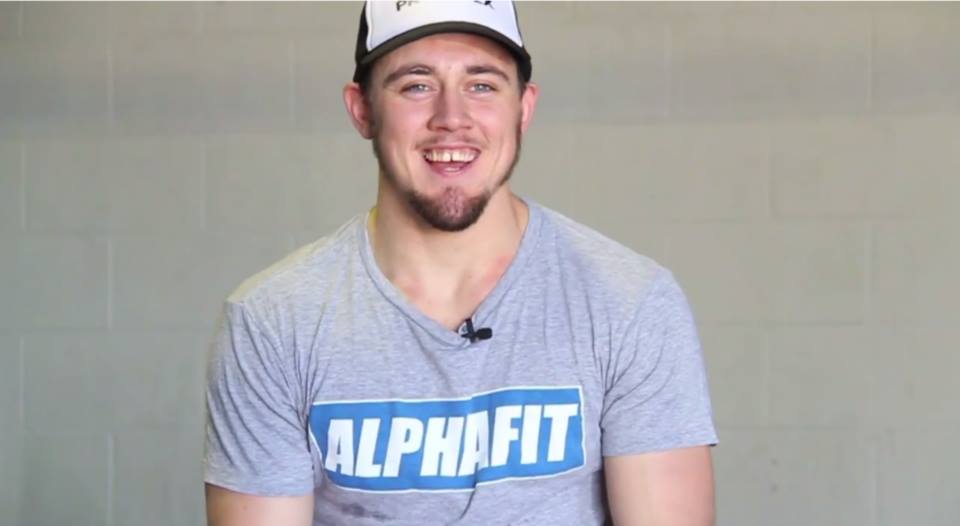
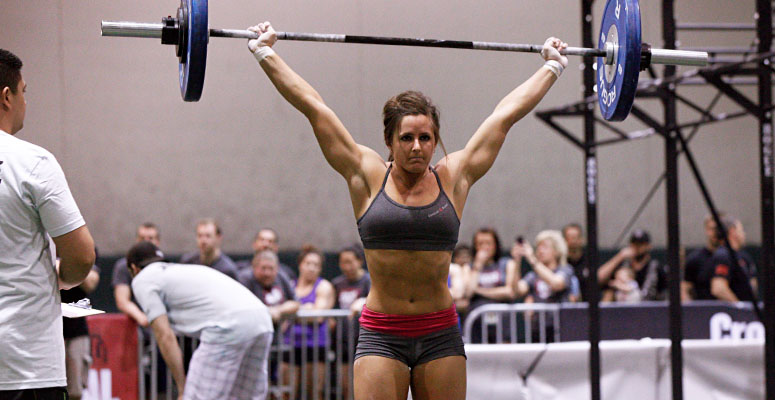


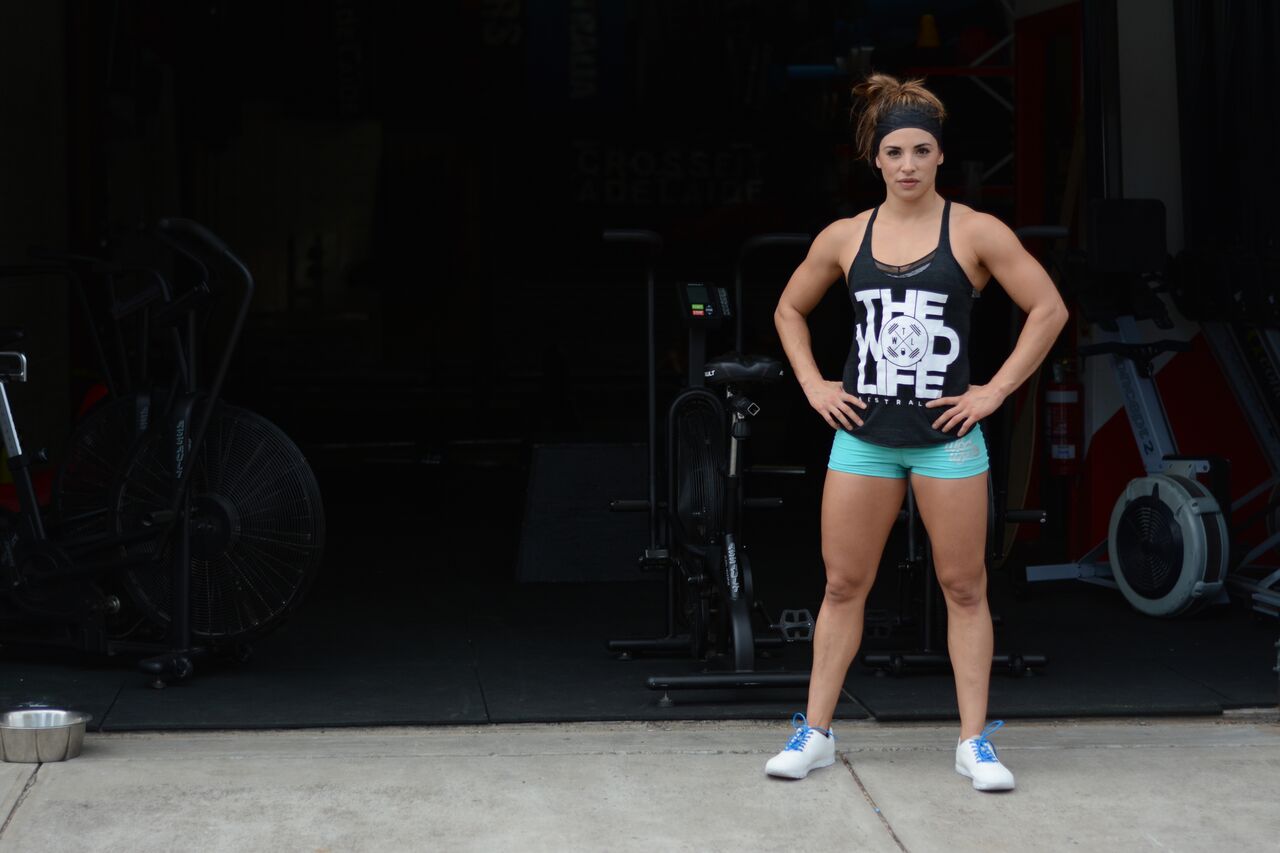
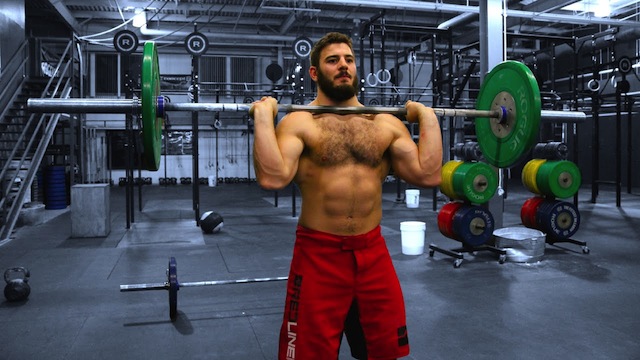
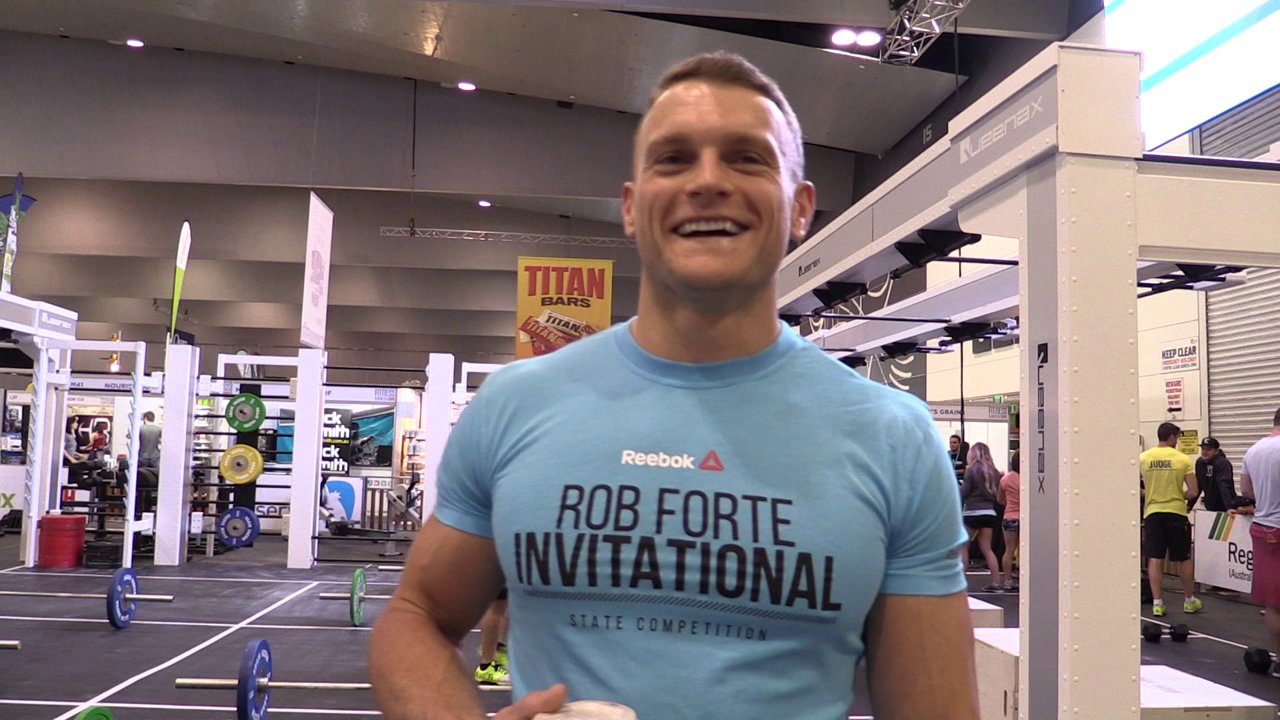
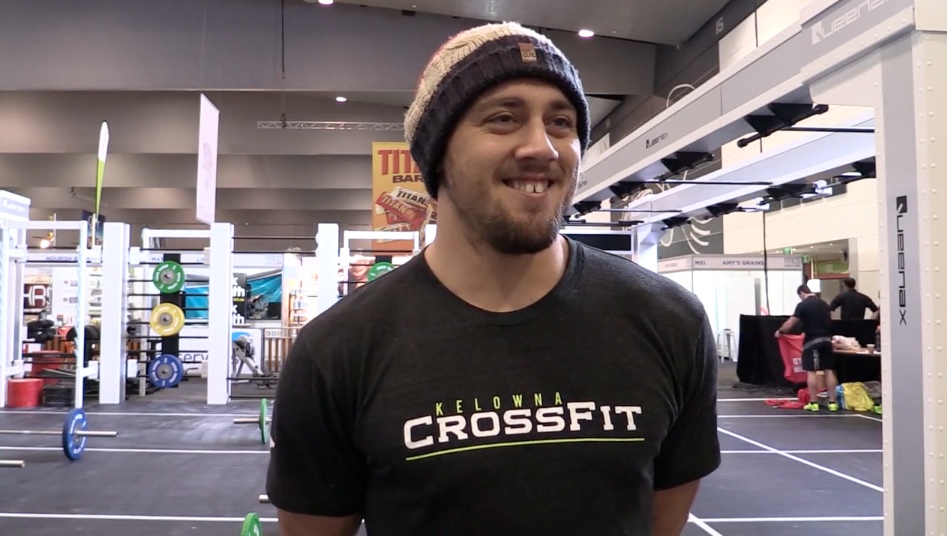
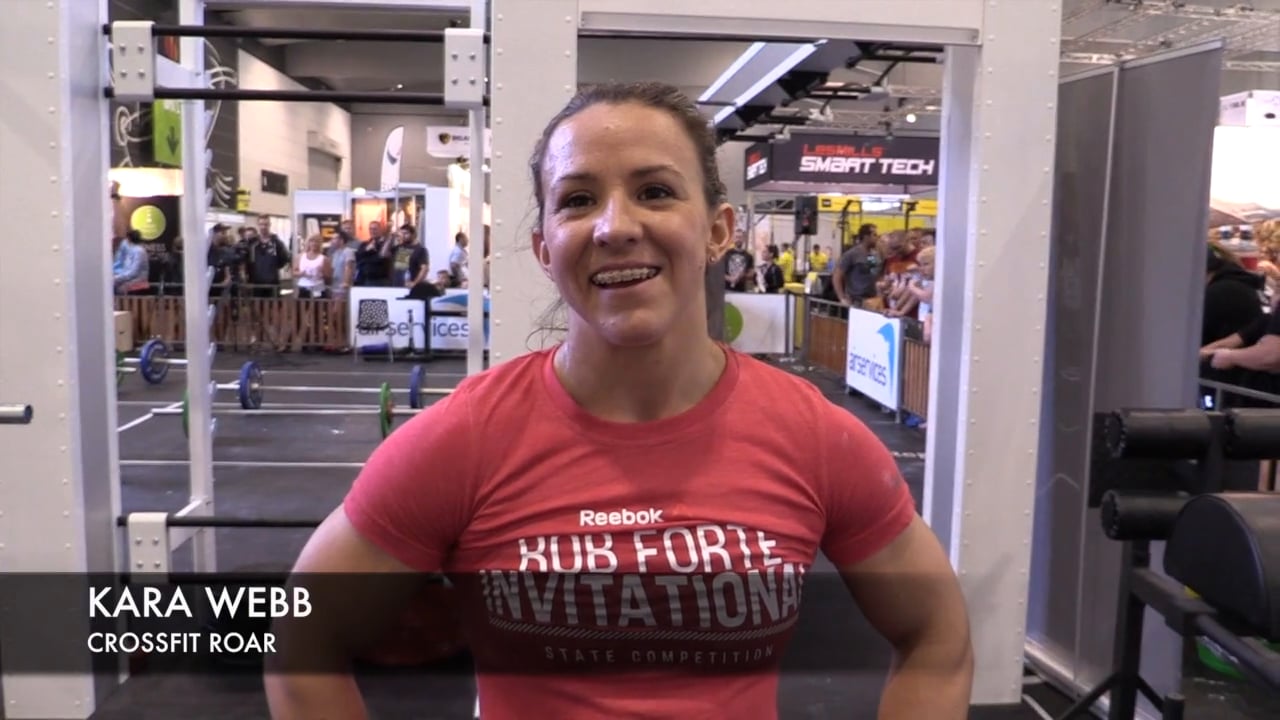
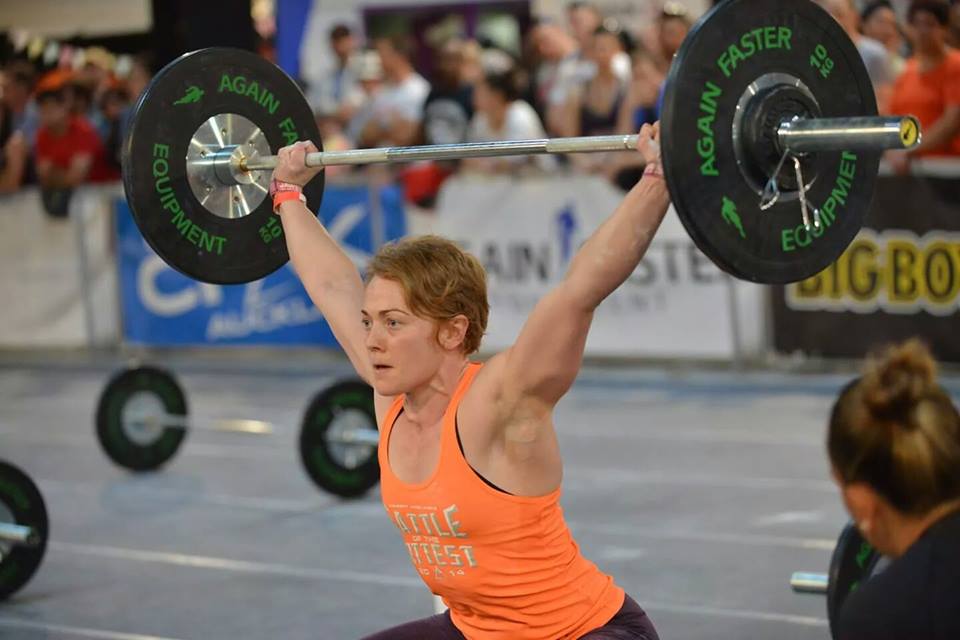
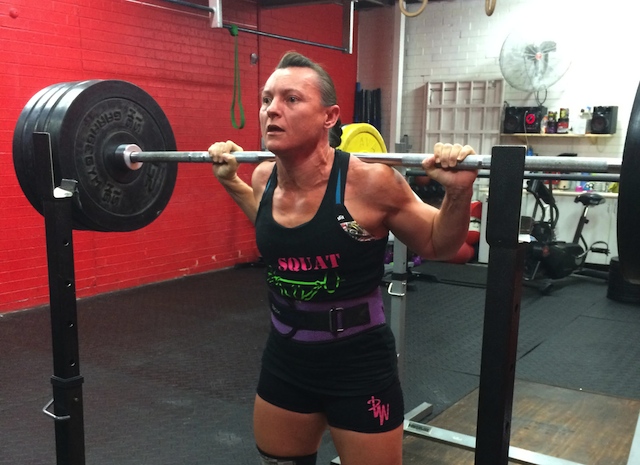
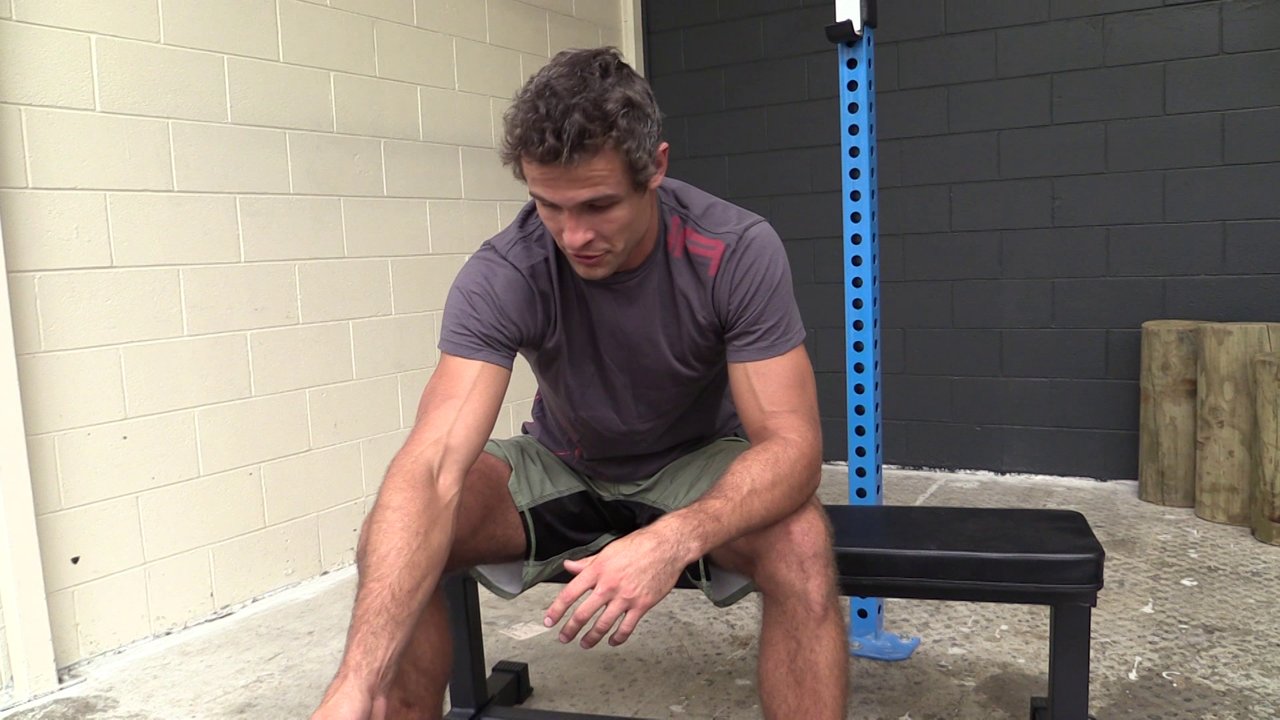
Follow Us